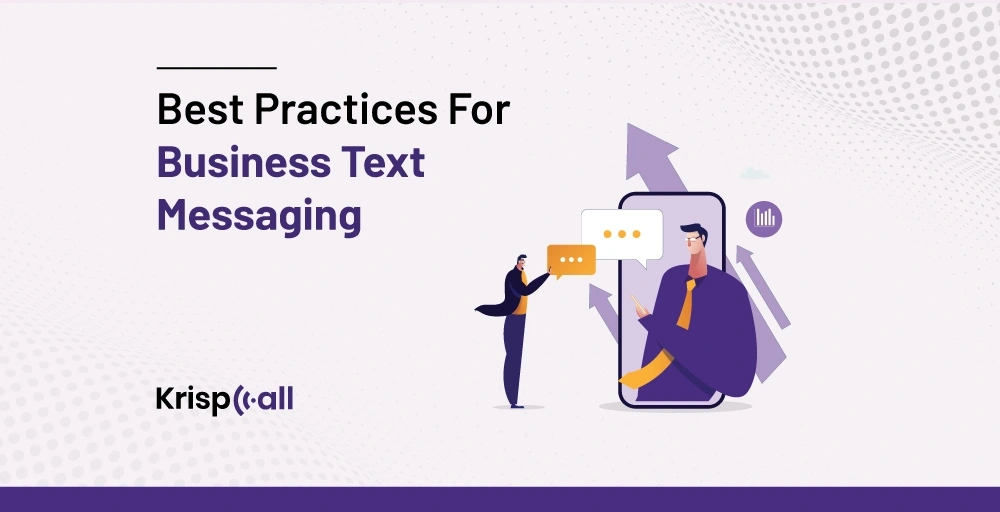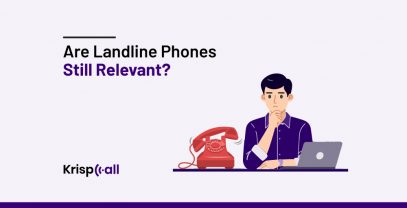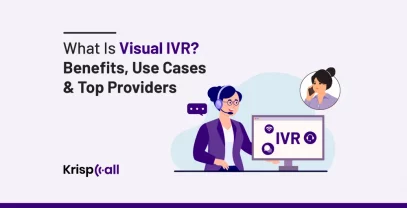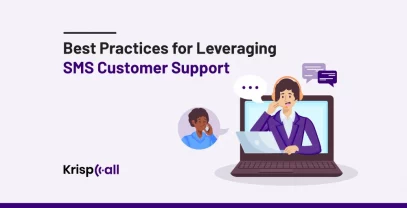In an era where instant communication is paramount, effective communication is the cornerstone of business success. As businesses strive to keep up with ever-evolving customer expectations, text messaging has emerged as a powerful tool to connect with clients instantly and efficiently.
Did you know that incorporating strategic text messaging practices can significantly boost your business performance? Businesses that text are 217.33% more likely to report success than businesses that don’t use text messaging
By adopting the best practices for business text messaging, you can enhance customer relationships and drive higher conversion rates. Clear and concise messages, timely responses, and compliance with regulations are just a few elements that contribute to an effective strategy. Businesses that prioritize these practices are better positioned to build trust and maintain ongoing customer interactions.
Are you ready to unlock the full potential of business text messaging? Discover the 10 best practices that can revolutionize your communication efforts and propel your business to new heights. Dive into our comprehensive guide and start implementing these strategies today to see a tangible improvement in your business outcomes.
What is business text messaging?
Business text messaging is a communication strategy that allows companies to communicate directly with customers and employees through text messages. It leverages the high open rates and immediacy of texting to deliver time-sensitive information, promotions, appointment reminders, customer support, and more.
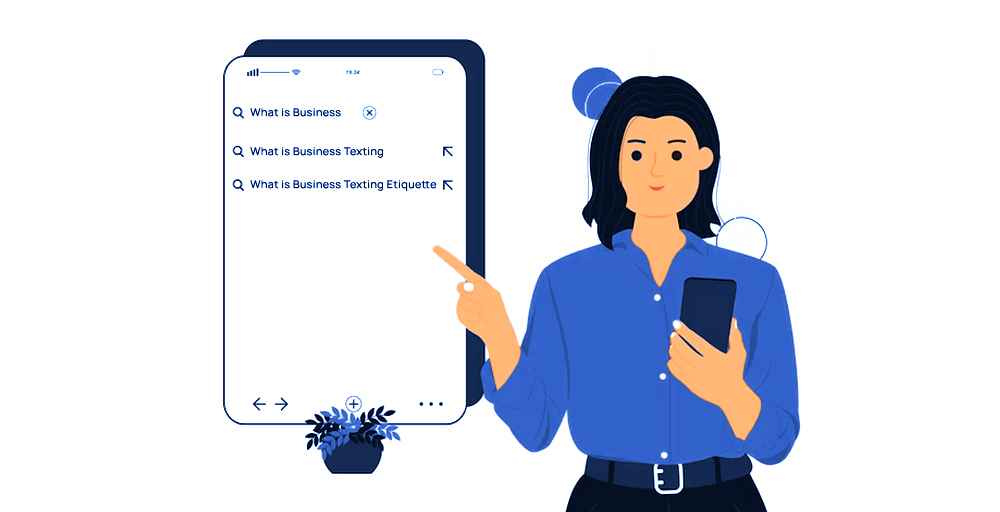
Businesses use it for internal communications as well as with clients and customers. It’s quick and simple, making it ideal for providing updates, informing about sales, and confirming orders. This helps companies maintain satisfied clients and build closer bonds with them.
Businesses must adhere to a few key guidelines to use corporate text messaging effectively. The messages should be concise and clear to ensure that individuals quickly understand them. Messages that are sent at the appropriate time receive better replies. Businesses also have to abide by regulations regarding sending SMS so they don’t bother people. Businesses can keep organization and retain clients by utilizing solutions that can send SMS automatically for sales notifications or appointment reminders.
Example: A real estate agent might use business text messaging to quickly update a client about the status of their offer on the house by providing timely information and maintaining communication efficiency.
Best Practices for Business Text Messaging: Best Tips & Effective Strategies
While implementing business text messaging techniques, it’s important to consider various things like timing, frequency, and few more. It is also important to maintain an optimal frequency of messages to avoid over-messaging, respect recipient’s preferences and prevent your communications from being perceived as spam.
1. Utilizing Permission-Based Messaging Practices
When you use permission-based messaging, you are only delivering messages to those who have given their consent. It’s similar to getting someone’s consent before texting or emailing them. By doing this, companies can make sure that the people they are contacting are interested in hearing from them. It is significant because it maintains businesses operating within the law and respects people’s privacy and choices.
Additionally, following business texting etiquette increases the likelihood that messages will be accepted and read by the recipients, assisting companies in fostering stronger customer relationships and trust.
2. Maintaining Concise and Clear Communication
Clear and concise communication means using simple words and short sentences to get your point across without any confusion. It’s like sending a text message that is easy to understand and doesn’t have any extra information that might confuse the person reading it.
This kind of communication helps everyone to know exactly what they need to know without wasting time or getting mixed up. It’s important in business because it ensures that messages are understood quickly and accurately, which helps things run smoothly and prevents misunderstandings.
3. Adopting a Professional Tone in Messages
Using language and a tone of voice that conveys respect and seriousness when communicating is equivalent to speaking courteously and clearly with adults or teachers. It’s important to use polite and precise language when conducting business. This means remaining away from slang and informal vocabulary that could be confusing to some readers or give the message a less serious vibe.
Making a favorable impression is also aided by speaking in a professional manner. It conveys your seriousness about your work and your regard for the other person. Written in a formal tone when you make communication in a single message or in bulk messages, a higher chance of being interpreted seriously and can foster positive connections and trust with clients, customers, and coworkers.
4. Sending Messages at Considerate and Optimal Times
The appropriate time for text messages matters for business-to-business communication. Sending messages in the morning or early evening is a good idea since those who receive them are more likely to be available and pay attention.
Avoiding late-night or early-morning messages respects recipients’ schedules and guarantees they won’t be bothered during their busy or rest periods. Businesses can improve communication and engagement with customers by strategically selecting when to distribute information. This increases the likelihood that customers will notice and respond favorably to their communications.
5. Incorporating Personalization in Your Messaging
Incorporating personalization in your business text messaging involves making your messages more personalized and specific to each recipient. Think of it like when you talk to a friend and mention something they care about – it shows you know and care about them.
For example, using someone’s name in a message makes it feel more personal and less like mass communication. Instead of saying “Dear Customer,” you can say “Hi Sarah,” which immediately grabs their attention and makes them feel recognized.
6. Ensuring Compliance with Relevant Regulations
This refers to ensuring that businesses comply with the laws and regulations that specify the permissible uses of text messages. These regulations are in place to safeguard individuals from unwanted communications and to ensure that companies communicate with dignity. Such that obtaining consent before sending texts to someone’s phone is one crucial guideline. This consent indicates that the individual wishes to hear from the company.
Providing an easy option for recipients to unsubscribe from messages in case they change their minds is another criterion. A straightforward text response or an unsubscribe link might accomplish this. Businesses can steer clear of legal problems and consumer complaints by adhering to these guidelines. It also aids in keeping a positive
Here are some examples of ensuring compliance with regulations in business text messaging:
- Consent: Obtain permission before sending texts. Example: “Reply YES to subscribe.”
- Opt-out: Provide clear unsubscribe instructions. Example: “Reply STOP to stop.”
- Timing: Respect texting hours. Example: “Messages 9 AM – 9 PM only.”
- Privacy: Protect customer data. Example: “GDPR-compliant data protection.”
- Content: Ensure truthfulness. Example: “20% off with code SAVE20.”
7. Using Automation and Pre-Designed Templates
In the context of business text messaging, automation, and pre-designed templates refer to the utilization of tools and pre-made designs that speed up and simplify message delivery. Businesses can send automated communications at the appropriate moment, such as order updates or appointment reminders, by using automation.
Pre-designed templates are similar to messages that are ready to use and can be rapidly customized by businesses. They make it easy to send professional, well-written communications without having to start from zero. This aids companies in effectively conveying their message and preserving a unified brand voice.
Automated reminder: Hi Sarah, just a friendly reminder about your appointment tomorrow at 9:00 AM. Reply ‘CONFIRM’ to confirm or ‘RESCHEDULE’ to change.
8. Tracking and Analyzing Messaging Performance
Monitoring and assessing messaging performance entails being aware of the effectiveness of your text messages and understanding the outcomes. It is recommended that businesses utilize tools to track various metrics such as the number of messages opened, replies, and link clicks inside the messages. Businesses can determine what is effective and what requires improvement by gathering this data.
Businesses can improve their decision-making on communication tactics by having a better understanding of how well text messages operate. When specific messages receive a lot of positive feedback, companies might utilize those same messages later on. Businesses might experiment with various strategies to enhance their messages if some are not performing as expected. Reviewing and evaluating this data on a regular basis guarantees that companies are always improving their
9. Prioritizing Security and Privacy in Communications
Prioritizing Security and Privacy in Communications means making sure that the information shared through business text messaging is safe and kept private. Businesses need to protect their customers’ personal information, like phone numbers and other sensitive details, from being accessed by unauthorized people. This helps prevent problems like identity theft or fraud.
To do this, businesses should use secure systems to send and store text messages. They should also be careful about what information is included in the messages, avoiding the sharing of sensitive details like passwords or financial information. It’s important to regularly update security measures to protect against new threats and to train employees on how to handle information safely.
By prioritizing security and privacy, businesses can build trust with their customers and ensure that their communications are safe and reliable.
10. Developing an Integrated Communication Strategy
Creating an integrated communication strategy entails ensuring that text messaging functions well with other channels of communication for a business, such as social media and email. These platforms also allow you to send and receive text messages at an appropriate cost.. Each of these approaches ought to convey the same idea and reinforce the others.
This ensures that clients will always receive the same information, regardless of the method of contact. It contributes to giving clients expert experience and presenting the company as dependable and well-run.
Some of the communication approaches that you can use in your business include:
Consistent branding: In this method, consistency in branding is also crucial. Businesses may provide clients with a seamless and polished experience by integrating an omnichannel strategy with consistent branding, which also gives the company an air of reliability and organization.
Omnichannel approach: Omnichannel communication strategy is the way customers interact with the business. This means that whether a customer is shopping online from their computer, using a mobile app, or visiting a physical store, they will have a consistent experience. The information about their preferences and past interactions is available across all channels, making it easier for the business to serve them better.
Examples of business text messaging

- Appointment Reminders: A dental clinic sends automated text messages to patients the day before their appointments. The message includes the date, time, and a prompt to confirm or reschedule if needed.
- Order Confirmations: An online retailer uses a pre-designed template to automatically send a text message to customers confirming their order details shortly after a purchase. The message includes the order number, items purchased, and estimated delivery date.
- Feedback Requests: A restaurant sends automated text messages to customers after their dining experience and asks for feedback on the service and food quality. The message includes a link to a survey and a thank-you note.
- Promotional Offers: “Don’t miss out on our exclusive summer sale! Enjoy 50% off all swimwear this weekend. Visit our store or shop online now with the code SUMMER50.”
- Customer Service Updates: “Hello! Your recent order #123456 has been successfully processed and is on its way to you. Track your shipment here: [tracking link]. Need assistance? Reply to this message or call us at [customer service number].
Conclusion
Effective text messaging strategies are essential for modern organizations hoping to boost client engagement, build trust, and get major results. Businesses can build lasting connections with customers and enhance brand trust by emphasizing clear communication, adhering to regulations, and strategically utilizing automation and customization.
By ensuring that messages are pertinent, timely, and considerate of the preferences of the recipients, these approaches raise the possibility of favorable engagement and reactions. Adopting these tactics enables companies to increase customer happiness, streamline operations, and ultimately spur growth and success in the cutthroat market of today.

